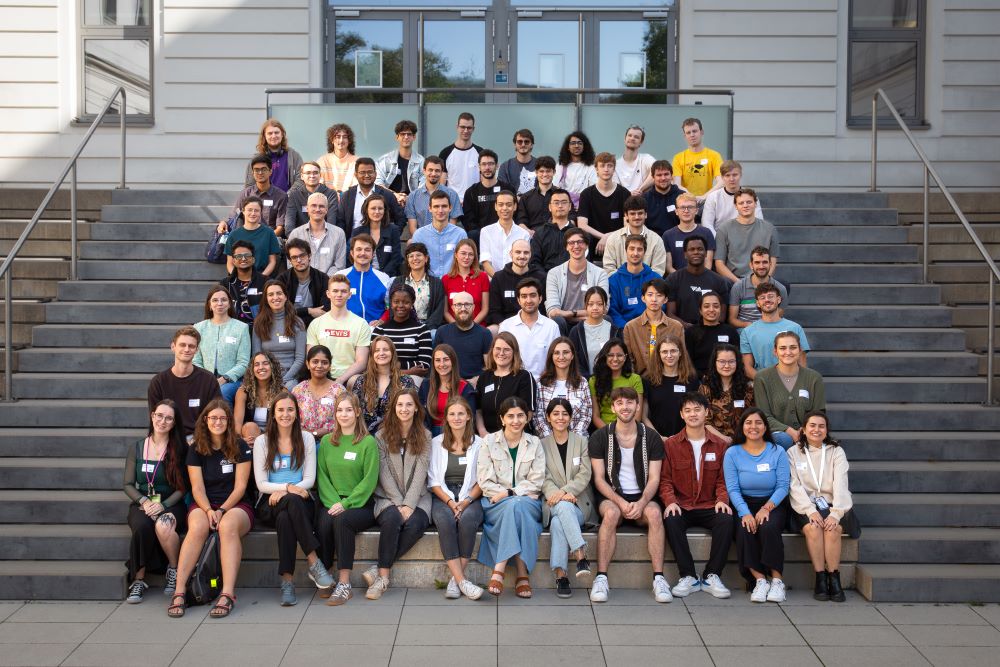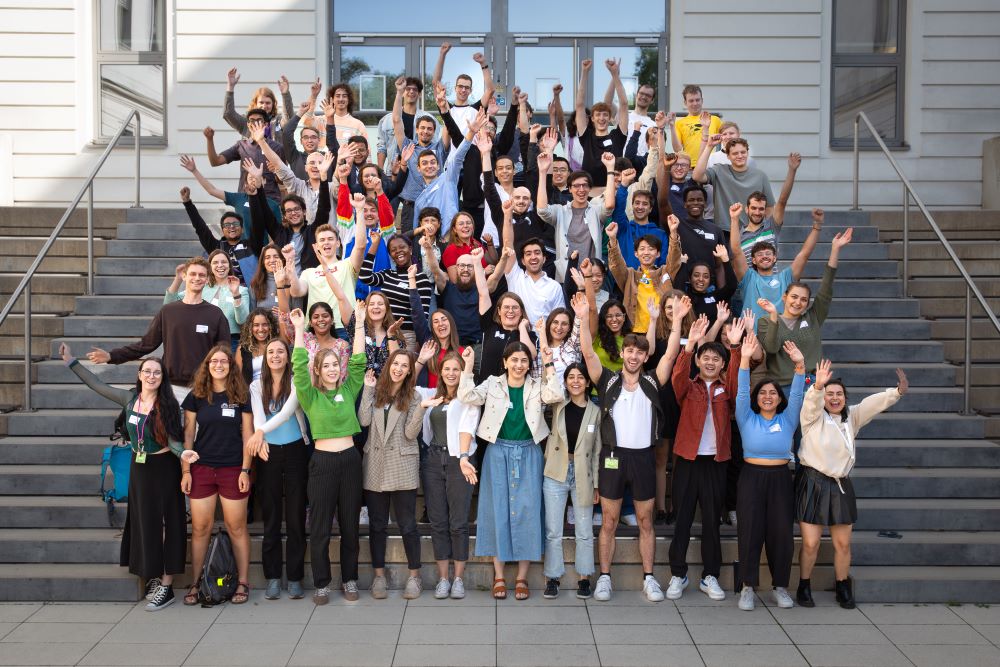September 20, 2024
76 New PhD Students at ISTA
28 countries represented in the Institute’s largest PhD cohort to date
On Monday, 16 September 2024, the Institute of Science and Technology Austria (ISTA) in Klosterneuburg welcomed its newest group of PhD students. With a total of 76 new students, this year’s cohort is the largest in the young Institute’s 15-year history—an 11-fold increase to when the program started.

This year’s cohort is another contribution to ISTA’s overall diversity: 28 nationalities are represented among the 76 new students. More than 80 percent come from outside of Austria and more than one-third from outside of Europe. To help them acclimate to life in Austria, first-year international PhD students are invited to live on campus.
About two thirds are joining with a Master’s degree, the other third with a Bachelor’s degree. For many of the students, the process has been almost a year in the making, as ISTA’s application period runs from October to January. This means that those who are interested in being part of the 2025 cohort can apply from next month on until January 2025.
Take it for a spin: What makes ISTA’s PhD program unique?
The Graduate School’s PhD program at the Institute of Science and Technology Austria (ISTA) is fully funded and highly interdisciplinary, ensuring that the Institute remains a fertile ground for cross-disciplinary exchange and collaboration. With close supervision by world-class faculty, the program helps students become excellent in their fields of study.
“ISTA as a research institute is a scientific community of brilliant and curious minds,” remarked ISTA president, Martin Hetzer, on the occasion of the cohort’s arrival. “During your PhD, there will be many moments when your creative thinking will be required, because science, like art, is a creative process. We try to explore the unknown. We go into territories where nobody has been before. We look at things that everyone has been seeing, but we solve questions in ways nobody has considered before.”
This approach towards science is strengthened by a key feature of the PhD program at ISTA, which sets it apart from other universities and institutes: its rotation system. New doctoral students are not required to choose their final research group and supervisor upon arrival. Instead, they choose a minimum of three research groups to work with during their first year. The goal of this system is for students to become familiar with the methods and knowledge of other disciplines to promote interdisciplinary thinking from day one.
“Build your place at ISTA”
“The entire ISTA community is here to support you and help you succeed,” reminded Eva Benková, Dean of the Graduate School of ISTA in her remarks to the new students. “You will find out that this journey is as much about personal growth as it is about academic success. As you settle in, take time to explore everything that ISTA has to offer, visit the labs, the library, and the terrace by the pond, attend academic events, and meet new colleagues and friends. This is the time to build your place at ISTA.”

This year’s 76 new arrivals building their place at the Institute marks a major milestone. In 2010, the Institute welcomed its first seven PhD students who were willing to take a chance on a then-new institution. With 76 students, the Institute’s 15th cohort is yet another indicator of ISTA’s rapid growth. In the coming years, the Institute’s growth will continue with the goal of increasing from currently 80 to 150 research groups by 2036—which will also increase the number of possible PhD positions.



